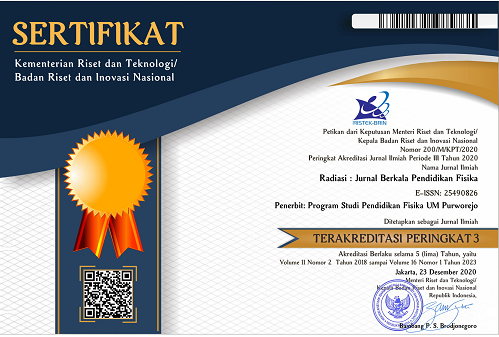Efektivitas Metode Eksperimen dan Demonstrasi dalam Meningkatkan Keterampilan Observasi Objek Fisika Ditinjau dari Perbedaan Gender
Abstract
The research aims to determine the effectiveness of the experimental and demonstration methods in improving the observation skills of physical objects in terms of gender differences. Experimental research uses a 2x2 factorial design, with a population of class X MAN students in Kutowinangun. Sampling using cluster random sampling with class X-IPA1 (experimental group) and class X-IPA2 (control group). The instrument for collecting data on object observation skills equipped with rubric has fulfilled the validity and reliability requirements. The results showed that (1) there was a difference in effectiveness between the experimental and demonstration methods for enhancing physics object observation skills. The Fhitung for the experimental group was 32.41> when compared to the Fhitung for the demonstration group by 23.93. Based on the components of the input, process, and output, and the results of statistical tests, the learning process using the experimental method is more effective than the demonstration method. (2) Male students who use the experimental method with a mean value of 46.12 are more effective against increasing physical object observation skills than female students who use the experimental method with a mean value of 36.45. (3) Female students who use the demonstration method with a mean value of 42.27 are more effective against increasing physical object observation skills compared to male students who use a demonstration method with a mean value of 37.00
Downloads

This work is licensed under a Creative Commons Attribution-NonCommercial 4.0 International License.




